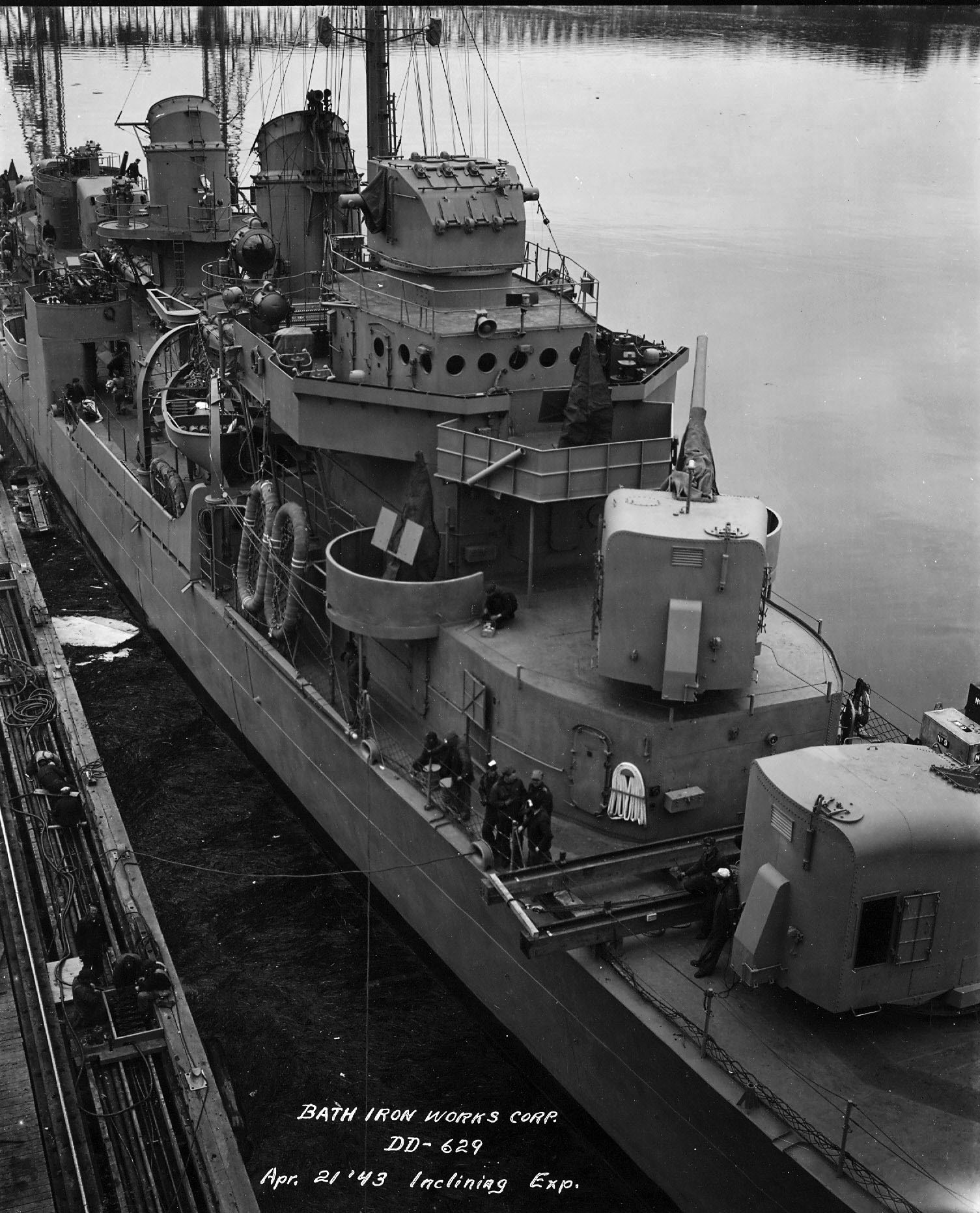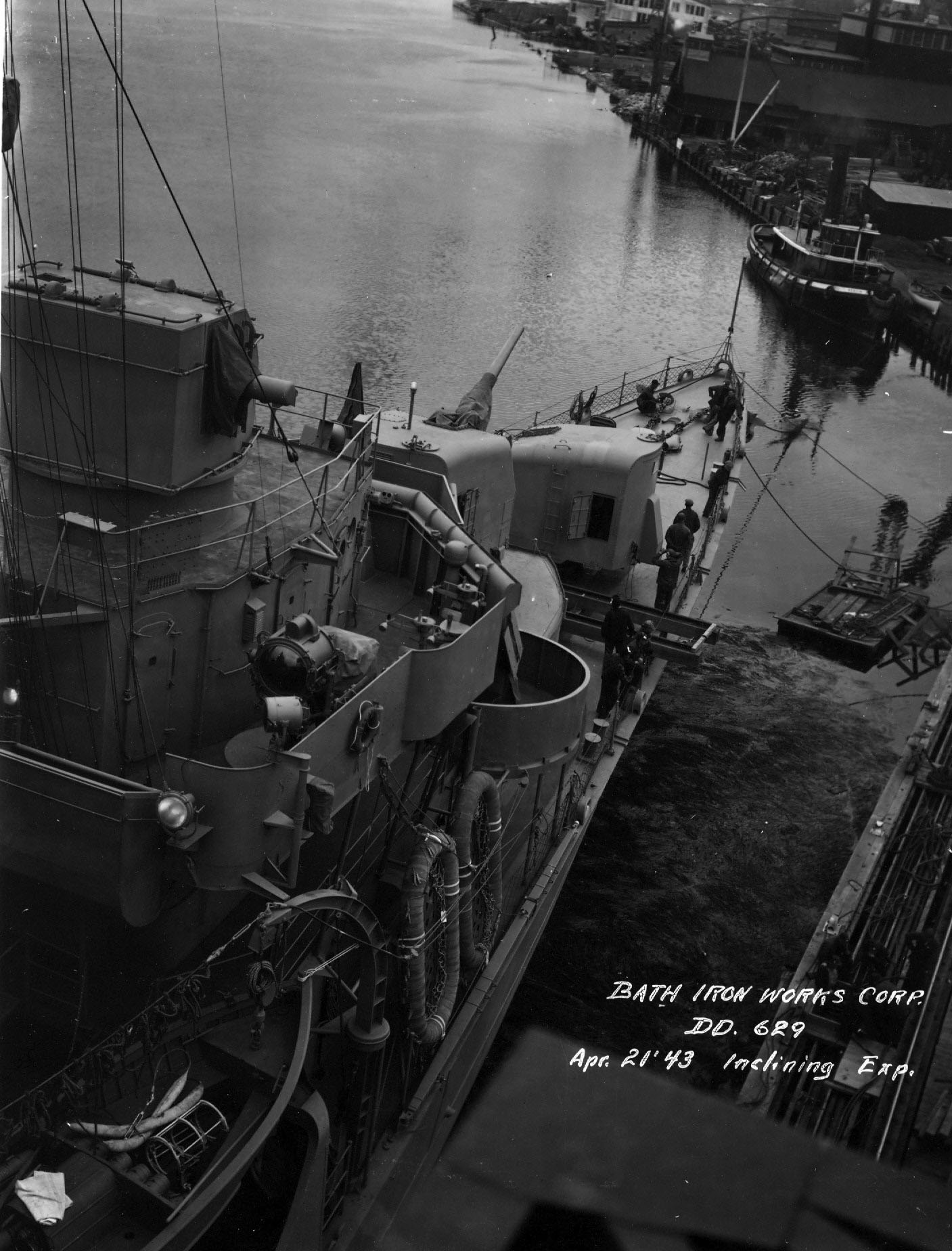Shipyard Photos: Incline Experiments
Photos courtesy of Ed Zajkowski
Two days before being commissioned in April 1943, Abbot is seen during a shipyard test known as an incline experiment. At this point Abbot still belonged to Bath Iron Works Corp. of Maine. Soon after this test, Abbot sailed to its commissioning ceremony at the Boston Navy Yard.
Incline experiments are performed by sliding weights across the deck of a vessel in calm waters — in this case the Kennebec River — to help naval architects determine the vessel’s center of gravity.
Bath Iron Works weighed each component during Abbot’s construction, and this test was designed to confirm the predicted center of gravity. Incline experiments are important because an incorrect calculation based on the center of gravity, such as the maximum righting moment, can lead to capsizing or poor performance; for a hair-raising example, read George Rider’s account of the storm where Abbot nearly overturned.
As the weights move across the deck, the ship’s angle of heel is measured with an inclinometer. These photos, used to confirm that the experiment was properly conducted, are some of the finest birds-eye views of Abbot in its initial World War II configuration. One weight rack is visible on the main deck between the two most forward 5” gun turrets, and another is near the stern. Also note the gun platform directly in front of the pilot house; this was removed, probably in late 1943 after the Cowpens collision.
Naval architects at Bath Iron Works would have been consulted about the effect of the loss of the gun platform on the ship’s righting moment.




